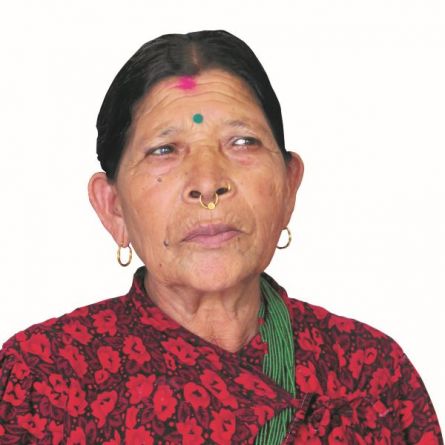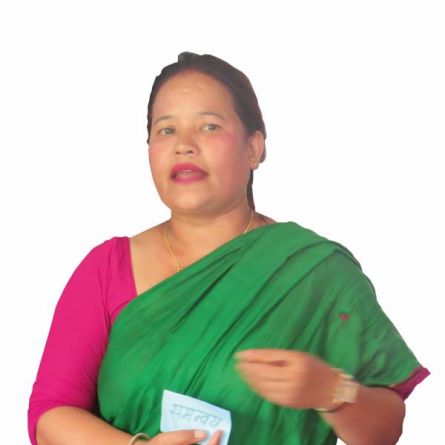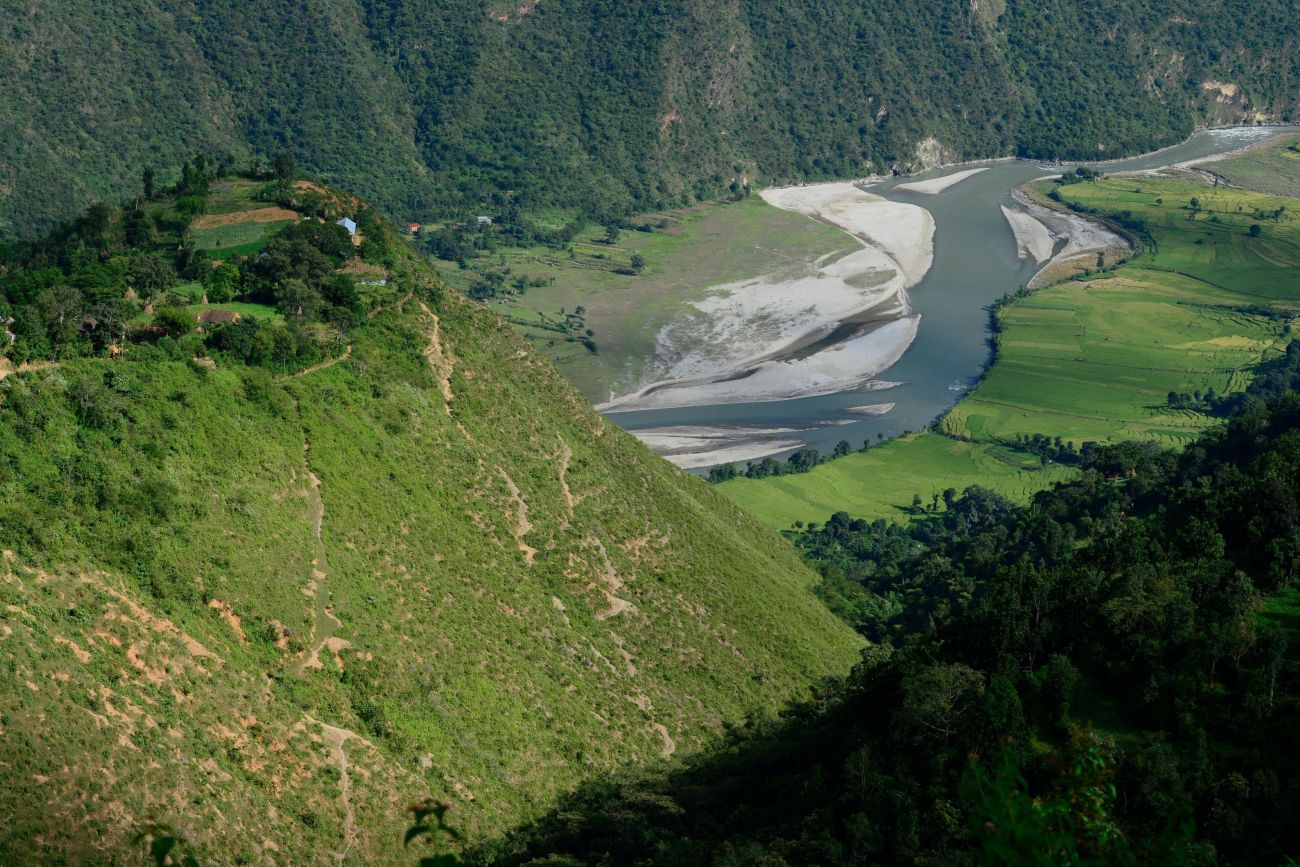
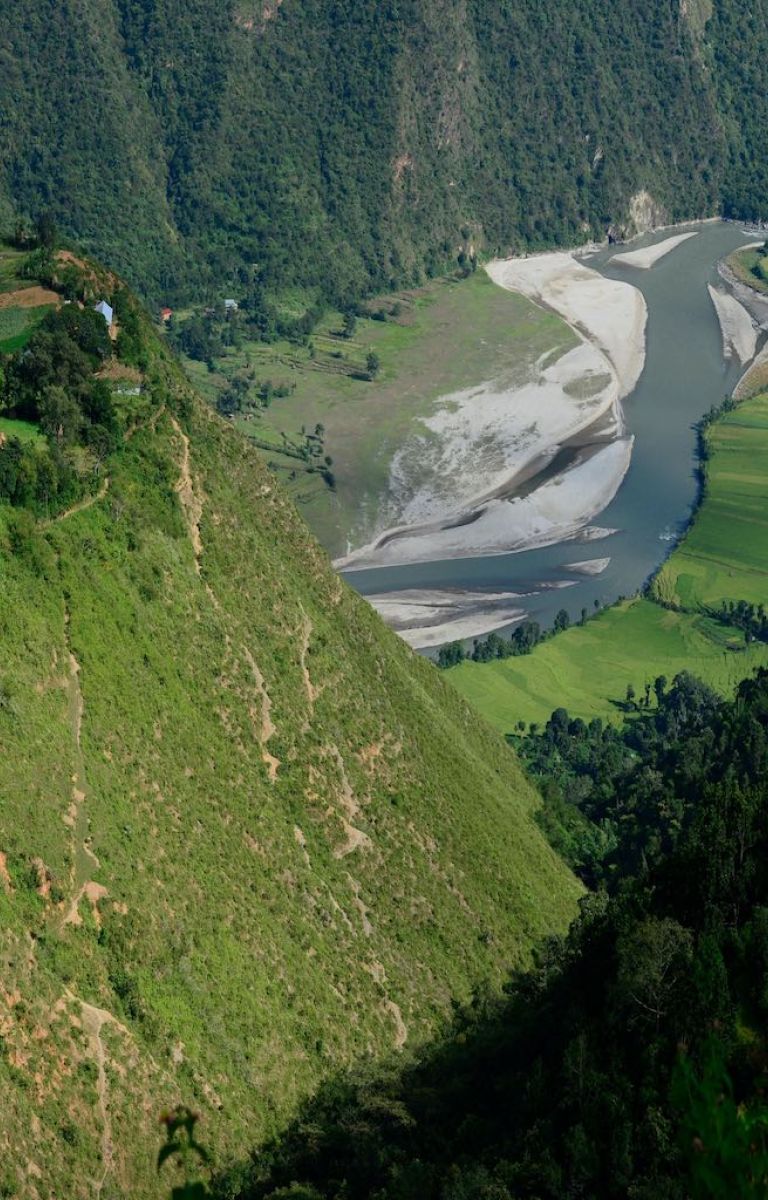
The Sacred Himalayan landscape covers more than 9.5 million hectares of steep mountains and hills extending from Nepal’s Langtang National Park to India’s Kangchenjunga Complex and to the Toorsa Strict Nature Reserve in Bhutan. It shelters immense biodiversity and is a vital source of water for people downstream. Already, the landscape and the people who depend on it are suffering from the severe effects of climate change. Limbu, Magar, Newar, Tamang, Rai, Sherpa and other Indigenous Peoples and ethnic communities are at greater risk of drought, flash floods, landslides and food shortages resulting from degradation of soils, erosion and changes in the composition of species. Deforestation exacerbates these risks. Measures to mitigate and adapt to climate change are crucial to the Nepalis and the world which depends on mountain ecosystems for water.
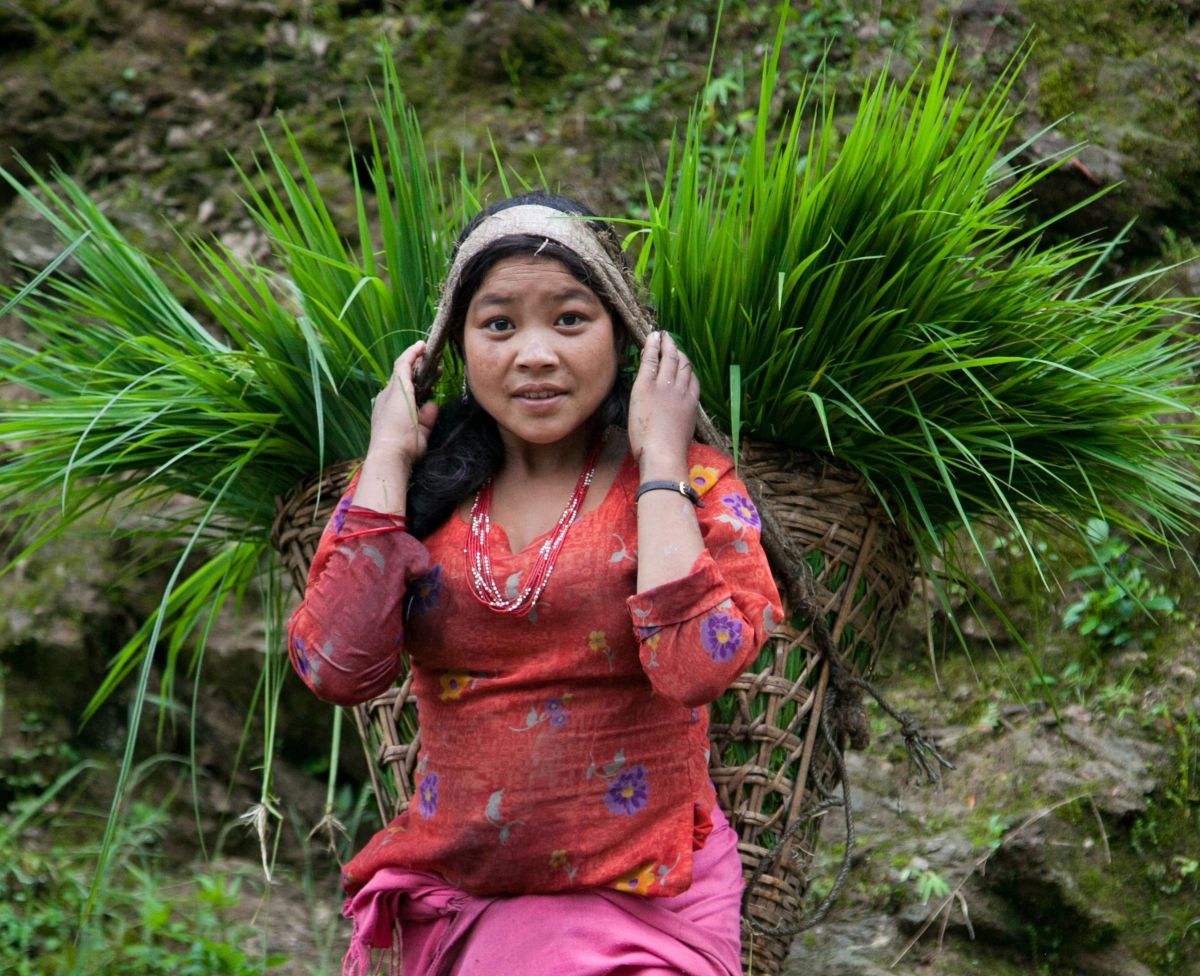
Sacred Himalayan by numbers
Total area of landscape: 2,333,636 hectares
Forest cover: 43.3 percent
Total forest area of landscape: 1,036,130
Population: 5,092,816
Poverty rate: 19 percent
Entry points for investment to achieve the SDGs
Fostering sustainable, inclusive and gender equitable management of mature plantations led by communities
Building a multi-stakeholder platform to create synergies between natural resource management and local development
Enhancing the climate resilience of local communities by increasing forest-based opportunities and income
Building a women's leadership circle to empower gender equality champions
Building the capacity of Indigenous Peoples and ethnic communities living in the mountain regions to adapt to climate change
The Sacred Himalayan landscape in Nepal and the people and biodiversity it shelters are threatened by forest degradation and climate change. Empowered local communities must lead the sustainable development and the protection of this forested landscape, and at RECOFTC we have the vision, skills, relationships and experience to support their leadership. Since 2002, we have helped the local communities in Nepal build their capacity to secure their land tenure and resource rights, govern and manage their lands and improve their livelihoods. Today, there are tremendous new opportunities in the Sacred Himalayan to further support local communities, government, civil society and the private sector to overcome these threats. We offer five entry points for action that will foster prosperous communities and a thriving landscape by capitalizing on the ambitions of the communities, our experience in Nepal and other countries and the work of many other organizations. Through our investments in the Sacred Himalayan we can contribute directly to achieving the Sustainable Development Goals of the United Nations 2030 Agenda. By 2030, we can lift 6,000 people out of poverty, empower 500 women to take active roles in decision-making, strengthen the capacity of more than 500 people to adapt to climate change and foster sustainable management of 20,000 hectares of forest.
Challenges
Climate
- Erratic rainfall patterns, drought, landslides and flash floods are increasing.
- Proposed hydro-power projects could disrupt water discharge and sever river connectivity, exacerbating the effects of climate change.
- Extraction of building materials and road construction are further fragmenting and degrading ecosystems already affected by climate change.
Livelihoods
- Rural communities face high rates of out-migration due to unemployment, with 67 percent of those who leave their communities between the ages of 15 and 24.
- Income generating opportunities are limited by low capacity to implement policy and programs and market barriers.
Governance
- Nepal ranks 122 in Transparency International's Corruption Perception Index indicating that public institutions are weak and lacking good governance.
- Conflict on rights, roles and responsibilities in managing forest resources is increasing among levels of government, government agencies and local communities. Benefit sharing is a growing source of tensions for communities.
- With forest management limited to subsistence livelihood, forestry contributes less than 5 percent to Nepal's Gross Domestic Product.
Social inclusion
- The literacy rate is 52 percent.
- Local people, particularly women and ethnic groups, have limited involvement in decisions regarding allocation and management of natural resources.
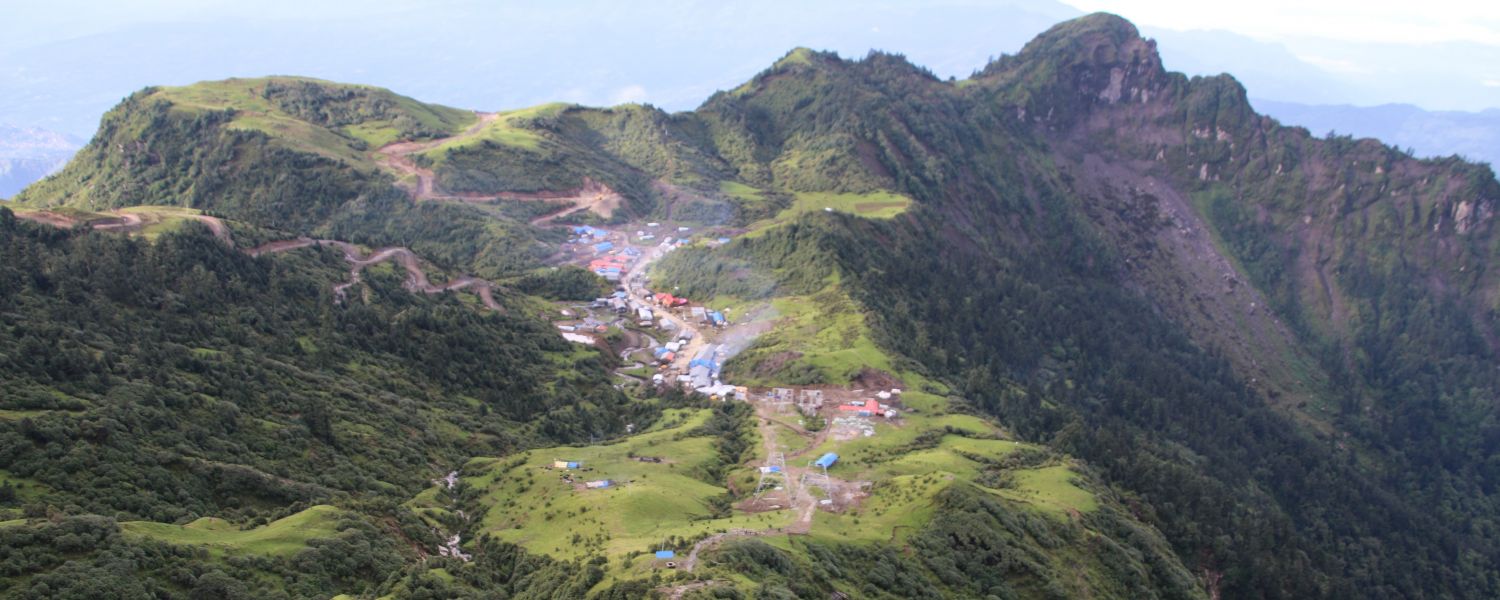
Partners
Local communities
- Fifty-five percent of local communities rely on subsistence farming and manage 489,266 hectares of community forest.
- Almost 40 percent are Indigenous Peoples and ethnic communities.
Government
- National, provincial and local governments participate in forest management.
- Government and non-government agencies are managing more than 50 percent of the forested area in the landscape as conservation areas.
Private sector
- More than 4,000 small- and medium- sized agricultural and forestry businesses operate in the landscape.
Civil society
- The Federation of Community Forestry Users Nepal represents communities that are managing forests and advocates for stronger community rights and greater support for communities.
- The Himalayan Grassroots Women's Natural Resource Management Association (HIMAWANTI) is enhancing women's engagement in natural resources management.
Our experience in Nepal and the Sacred Himalayan
Since 2002, we have supported communities in Nepal to foster healthy, resilient landscapes and built the capacity of local communities to improve their livelihoods and manage forests. Through our work we have become a leading voice in community forestry, recognized and trusted by local communities, the forestry administration, local authorities and civil society. We have:
- Established partnerships with 11 local organizations
- Built the capacity of 710 people to manage natural resources, 35 percent of them women
- Brought benefits to about 10,000 people
- Developed and scaled up a community-led model for adapting to climate change
In 2009, RECOFTC and Nepal’s Ministry of Forests and Environment signed a Memorandum of Understanding to guide their long-term engagement. Currently, we are engaged in action research to enhance forest management in community forests and private land through the Enhancing Livelihoods from Equitable Forest Management (EnLiFT 2) project. In addition, we are developing leadership in gender equality through a three-year Weaving Leadership for Gender Equality initiative, known as WAVES, launched in 2019. The initiative has built a network of 31 gender leaders who are influencing gender equality in climate change, REDD+ and forestry, law enforcement, governance and trade policies and processes in Nepal and six other countries in the Asia-Pacific.

